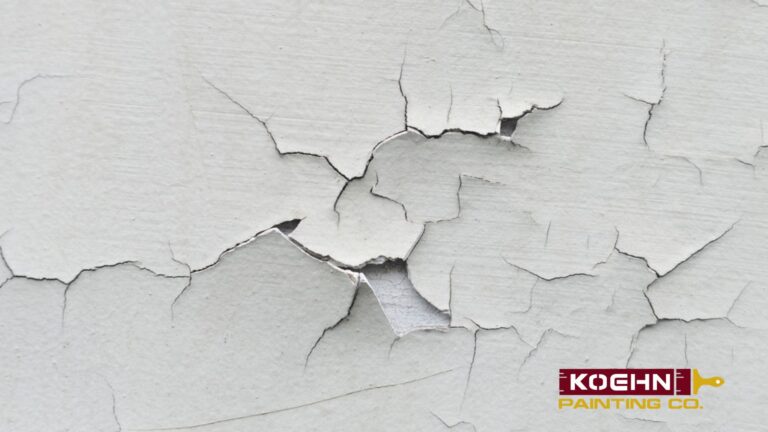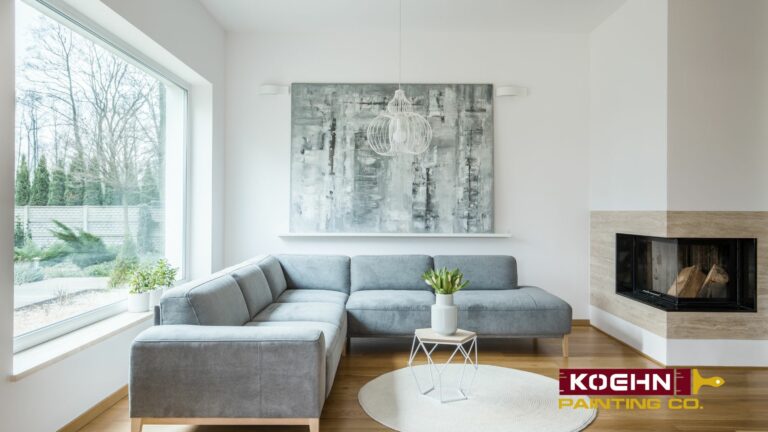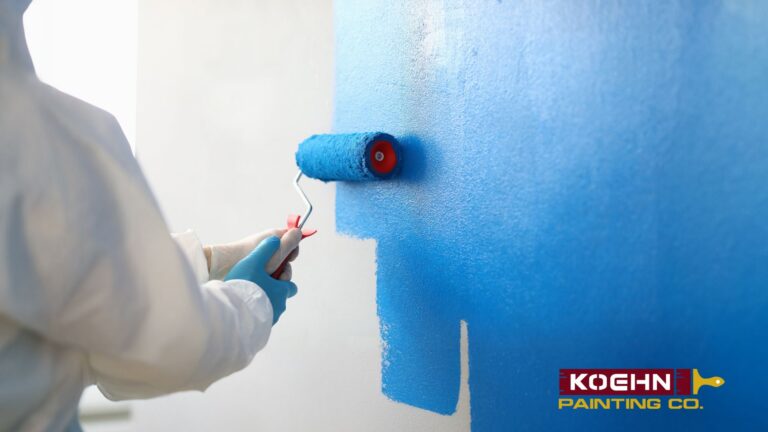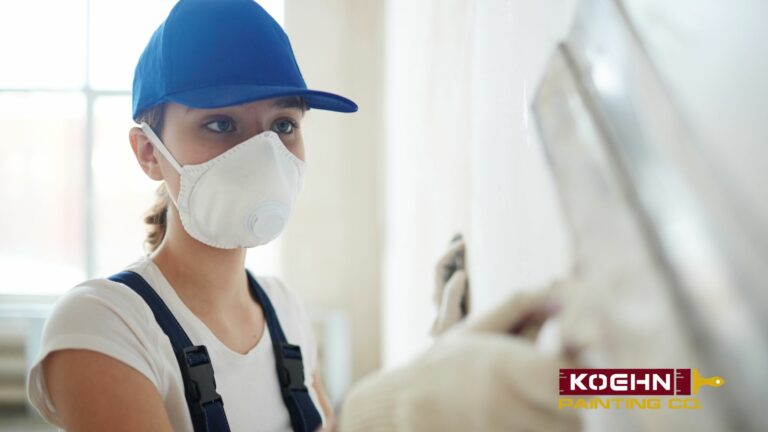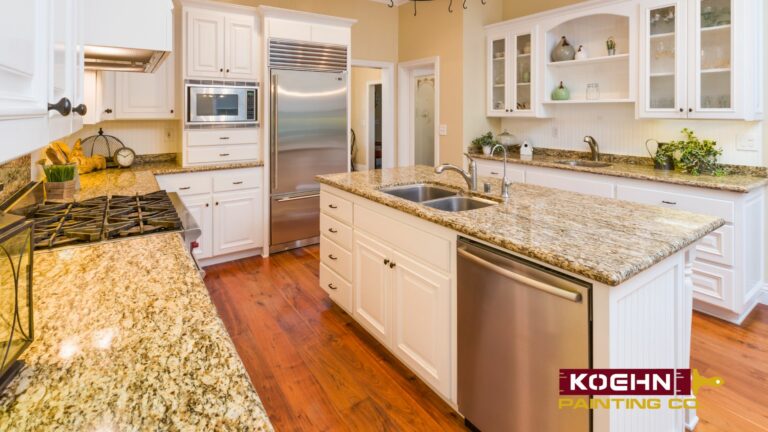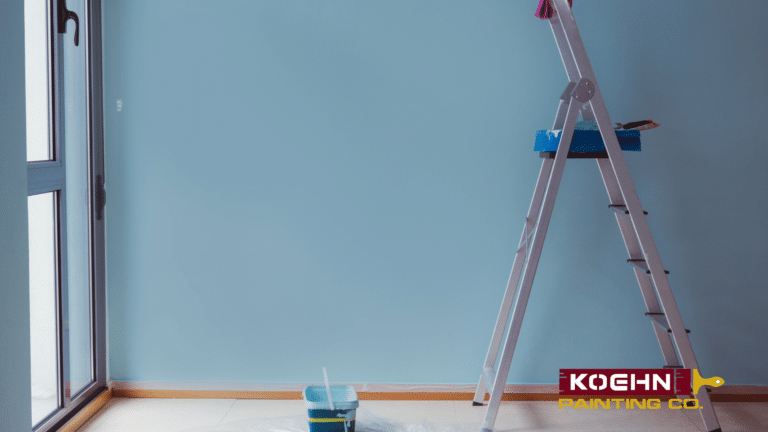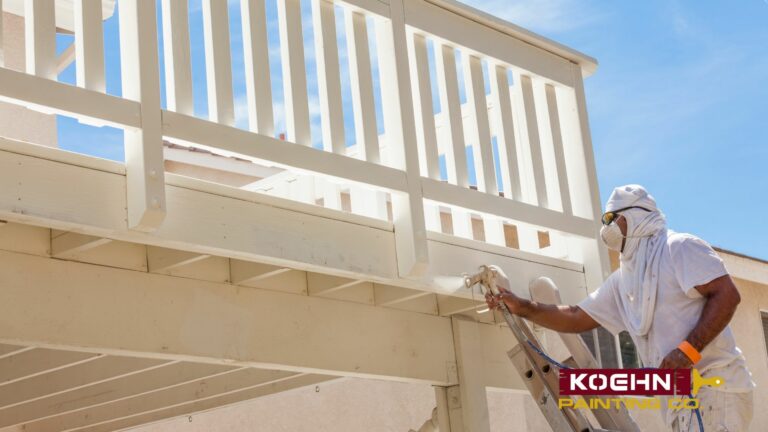Does Interior Paint Color Affect Temperature and Emotions?
When it comes to home design, we often think about how paint colors affect the look and feel of a space, but have you ever wondered, does interior paint color affect temperature?
While paint color—especially on exterior surfaces—can influence heat absorption and energy efficiency, interior paint has a more modest effect on a home’s actual temperature. Whether you’re trying to keep a room cooler during summer or create a warmer atmosphere during winter, understanding the science behind paint colors and their impact on temperature can help you make more informed decisions.
But paint color doesn’t just affect the physical temperature; it also plays a role in how we perceive a room. The hues on your walls can influence our emotions, making a space feel cozy, expansive, or even relaxing.
The Paint Color Heat Absorption Chart: How Different Colors Affect Temperature
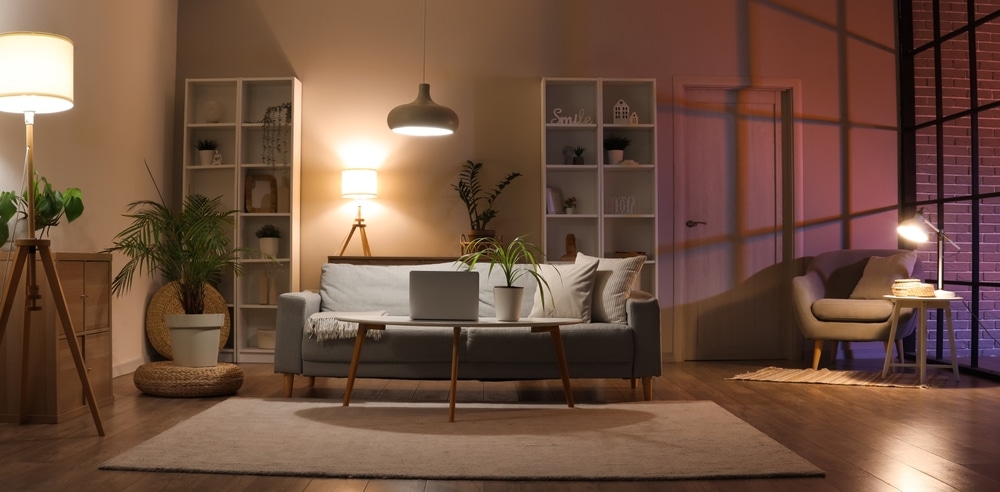
Understanding how paint color influences indoor temperature is crucial for optimizing comfort and energy efficiency in your home. So, does interior paint color affect temperature? The answer lies in how different colors absorb and reflect heat. The color of your walls can highly impact how much heat is absorbed or reflected, affecting both the actual and perceived temperature of a room.
But, how does this work? Colors interact with light in various ways, primarily through absorption and reflection. Darker colors absorb more light and heat, while lighter colors reflect them. This principle is particularly important for exterior surfaces, such as walls and roofs, which are exposed to direct sunlight. While this principle is most pronounced in exterior applications like roofs, where surfaces are exposed to direct sunlight, the effect is less dramatic indoors, where walls typically receive less radiant heat.
For instance, a study by the U.S. Environmental Protection Agency (EPA) found that a white roof had a temperature of 110°F (43.3°C), while a black roof reached nearly 190°F (87.8°C) on a sunny day in Austin, Texas.
As shown in the heat absorption chart below, you can clearly see the difference in heat absorption for various colors. As temperature increases, darker hues (such as red and dark red) cause a higher increase in temperature, while lighter colors (such as blue and white) reflect more heat, causing less of a temperature change. This graph demonstrates how color directly influences the thermal performance of painted surfaces.
The Light Reflectance Value (LRV) is a numerical measurement that indicates the percentage of visible light a surface reflects. LRV values range from 0 to 100, with 0 being absolute black (no reflection) and 100 being pure white (total reflection). Surfaces with higher LRV values reflect more light and heat, contributing to cooler indoor temperatures.
For example, a white paint with an LRV of 90 reflects 90% of visible light, while a black paint with an LRV of 5 reflects only 5%. This significant difference in reflectivity can lead to varying indoor temperatures, even if the actual air temperature remains constant.
While LRV affects the actual temperature of a room, color also influences our psychological perception of temperature. Studies have shown that colors like blues and greens can feel cooler by several degrees, though this is a psychological effect and doesn’t indicate an actual change in temperature. Conversely, warm colors such as reds and oranges can make a space feel warmer.
This psychological effect is particularly important in interior design, as it can enhance comfort without altering the thermostat settings.
Light vs. Dark Paint: Which Keeps Rooms Cooler or Warmer?
Building on the science of how paint color affects temperature, understanding the impact of light versus dark colors can help you make smarter choices when it comes to your home’s energy efficiency and overall comfort. Whether you’re trying to beat the summer heat or create a cozy retreat during the colder months, your wall color plays a significant role in regulating the temperature of a room.
Light colors keep you cool
Light colors, such as whites, pale blues, and soft greens, are ideal for hot, sun-exposed rooms such as kitchens, living rooms, and bedrooms with ample natural light. These colors reflect more light and heat, which helps keep indoor temperatures lower, especially during warmer months.
In places like Wichita, Kansas, light-colored paints are especially useful to minimize heat absorption and maintain a comfortable indoor environment.
Benefits of light colors:
- Reflect more light and heat, keeping interiors cooler.
- Reduce the workload of air conditioning in the summer months.
- Enhance brightness and make a space feel airier and more inviting.
Dark colors make you cozier
In contrast, dark colors like deep blues, browns, and dark grays absorb more light and heat. This heat absorption creates a warmer, cozier atmosphere, making dark colors ideal for cooler rooms such as bedrooms, dens, and offices—spaces where you want to feel snug and comfortable.
When dark colors work best:
- In cooler climates, where trapping heat can help create a comfortable space.
- In relaxation rooms like bedrooms, where warmth and intimacy are desired.
How to choose the right color for a room’s function
Selecting the right paint color based on the room’s function can optimize comfort and energy efficiency. For example:
- Light colors are great for workspaces or kitchens where you want a bright, energizing atmosphere.
- Dark colors work well in bedrooms and living rooms where you want to foster relaxation and warmth.
Make sure you’re carefully considering both color and room function; you can create a home that stays comfortable throughout the year, without needing to adjust your thermostat constantly.
See also: Why Does Paint Peel? Common Causes and How to Fix Them
Energy-Saving Paint: A Smart Choice for Cooler Homes
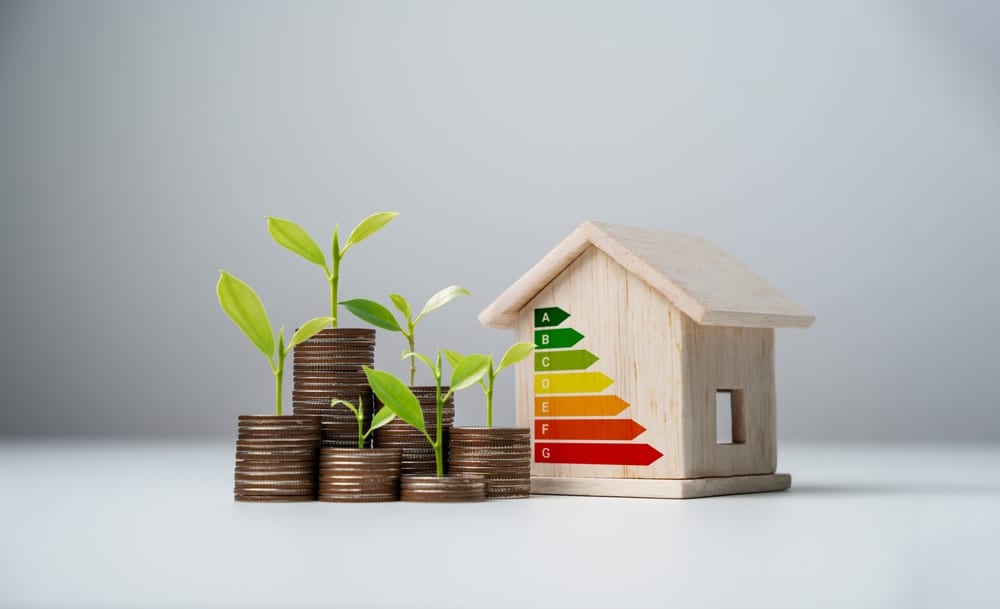
You should carefully select the right paint color and finish to enhance your home‘s energy efficiency. Energy-saving paint options, such as reflective or thermal-insulating paints, are designed to reduce heat absorption, lower cooling costs, and improve indoor comfort.
Reflective paints, often white or light-colored, are formulated to reflect more sunlight than traditional paints, leading to less heat absorption. This reduction in heat can lower indoor temperatures and decrease the need for air conditioning.
Thermal-insulating paints contain special materials like ceramic microspheres that help block heat transfer. These paints create a barrier that minimizes heat conduction, keeping indoor environments cooler in summer and warmer in winter.
Finishes also matter: Matte vs. glossy
The finish of your paint also impacts energy efficiency:
- Matte finishes: These absorb more light and heat, making them suitable for cooler climates or rooms where warmth is desired.
- Glossy finishes: These reflect more light and heat, helping to keep rooms cooler in warmer climates.
Choosing a light-reflective, glossy finish can be a smart option for rooms that need to stay cooler, especially in areas with intense summer heat.
The right paint choice can support your HVAC system’s efficiency. By reducing heat absorption, energy-saving paint lessens the workload on air conditioning units, leading to lower energy bills. This is particularly beneficial during hot summer months when cooling demands are high.
Why choose energy-saving paint?
There are several compelling reasons to opt for energy-saving paint:
- Helps maintain cooler temperatures: Reflective and insulating paints help keep your home at a comfortable temperature all year round.
- Reduces reliance on air conditioning: Less heat absorption means your HVAC system won’t be working overtime, which can significantly lower cooling costs.
- Contributes to energy savings: Some manufacturers suggest energy-saving paints may contribute to reduced cooling costs, but achieving energy savings of up to 30% typically requires multiple improvements (e.g., insulation, window upgrades, and reflective roofing).
- Enhances comfort: By improving temperature regulation, these paints contribute to a more comfortable home environment.
Another question people tend to ask is, should all rooms in a house be the same color? While it may seem convenient to use the same color throughout your home, it’s not always the best choice for energy efficiency. Each room in your home serves a different purpose and might benefit from different paint colors based on the specific climate and how much sunlight it receives.
The answer depends on the function of the room and your climate. For instance, you may choose lighter colors for rooms exposed to direct sunlight to keep them cooler, and darker tones for rooms where warmth is desirable.
So, does interior paint color affect temperature? Clearly, yes. The color of your walls can significantly impact how much heat is absorbed or reflected in a room, which directly affects the indoor temperature. Our paint color heat absorption chart data above confirms that lighter colors tend to reflect more light and heat, while darker colors absorb it, resulting in higher temperatures in rooms with darker walls.
In places like Wichita, Kansas, where temperatures fluctuate throughout the year, using light colors in sunlit spaces like west-facing rooms and darker tones in shaded or cooler areas like basements or bedrooms is the best choice. This strategy helps regulate indoor temperatures, maximizing energy efficiency and comfort year-round.
The Thermal Impact of Building Materials Mixed with Paint
While paint color is essential for temperature regulation, building materials also play a significant role in thermal efficiency:
- Thick Walls: Materials like concrete or brick provide natural insulation, reducing heat flow. These can work well with darker paints that absorb heat.
- High-Quality Insulation: Insulation helps maintain stable temperatures by preventing heat transfer, making it easier to keep rooms comfortable without relying heavily on HVAC systems.
- Windows: Energy-efficient windows prevent heat loss or gain. Pairing them with thermal-insulating paints can boost energy savings by minimizing heat transfer.
To maximize energy efficiency, combine smart materials with energy-saving paint:
- Reflective Glass: Reflective coatings can complement light-colored paints by blocking heat in summer and keeping warmth inside during winter.
- Advanced Insulation: Materials like spray foam or cellulose work together with energy-saving paint to prevent air leaks and improve overall thermal performance.
Going Further: Other Temperature Control Tips
To enhance your home’s energy efficiency, consider upgrading your insulation and window treatments. These additions complement energy-saving paints for optimal comfort.
- Upgrade Insulation: Prevent heat loss to maintain a stable indoor temperature.
- Energy-Efficient Windows: Install windows that reduce drafts and block UV rays.
- Thermal Curtains: Use curtains that help keep rooms cool in summer and warm in winter.
Alongside paint choices, these energy-saving upgrades can further reduce energy consumption.
- Smart Thermostats: Automatically adjust temperature to save energy.
- Weather Stripping: Seal gaps to prevent air leaks and improve insulation.
Conclusion: Does Interior Paint Color Affect Temperature
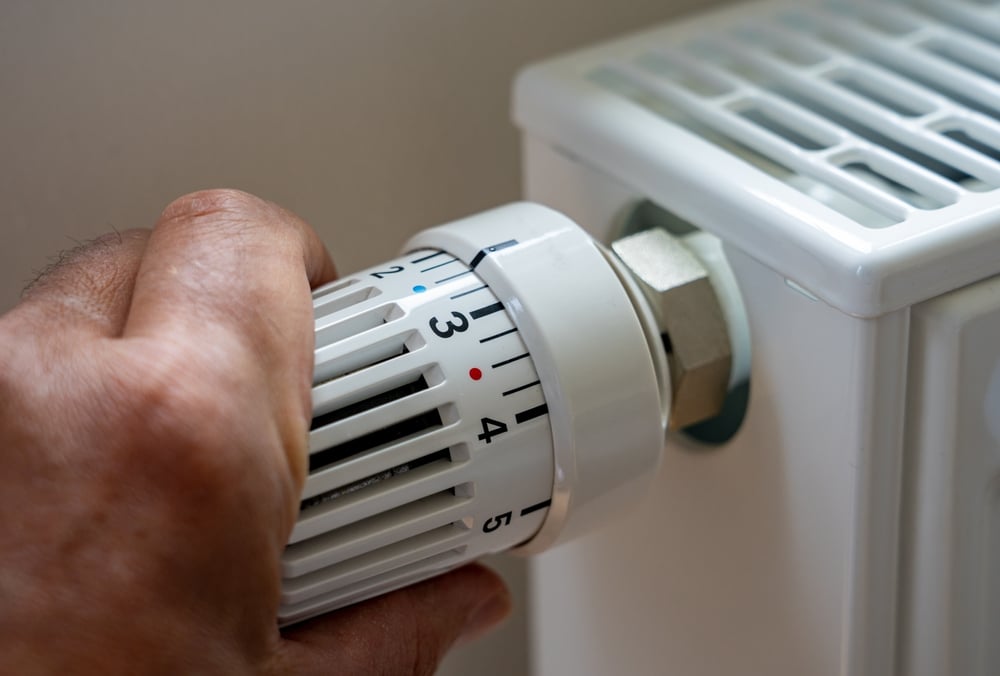
Does interior paint color affect temperature? Yes, it absolutely does. Repainting can improve energy efficiency by selecting colors that reflect heat, such as lighter shades for rooms that get a lot of sun.
Energy-efficient paints designed to block heat transfer can also help you maintain a comfortable indoor temperature. Repainting may be a wise decision if:
- Your current paint is outdated or no longer energy-efficient.
- You experience temperature fluctuations inside your home.
- You’re looking to reduce energy bills by improving your home’s insulation properties.
Repainting is a simple, cost-effective way to enhance the comfort of your home and save on energy costs.
